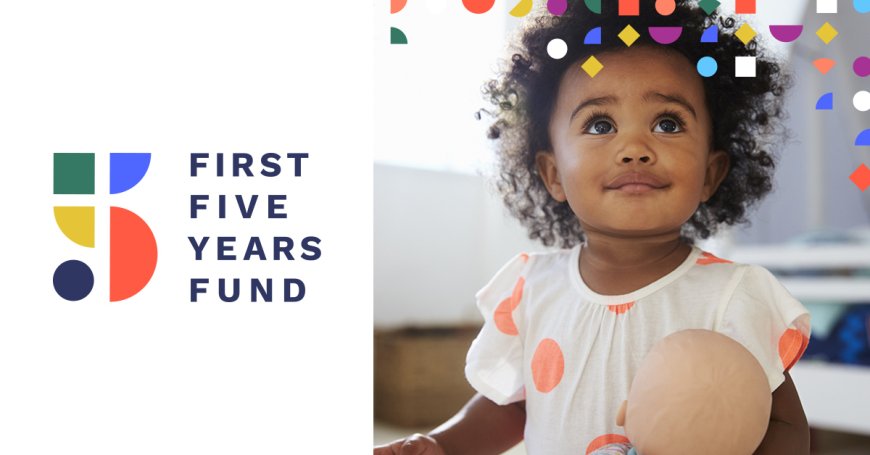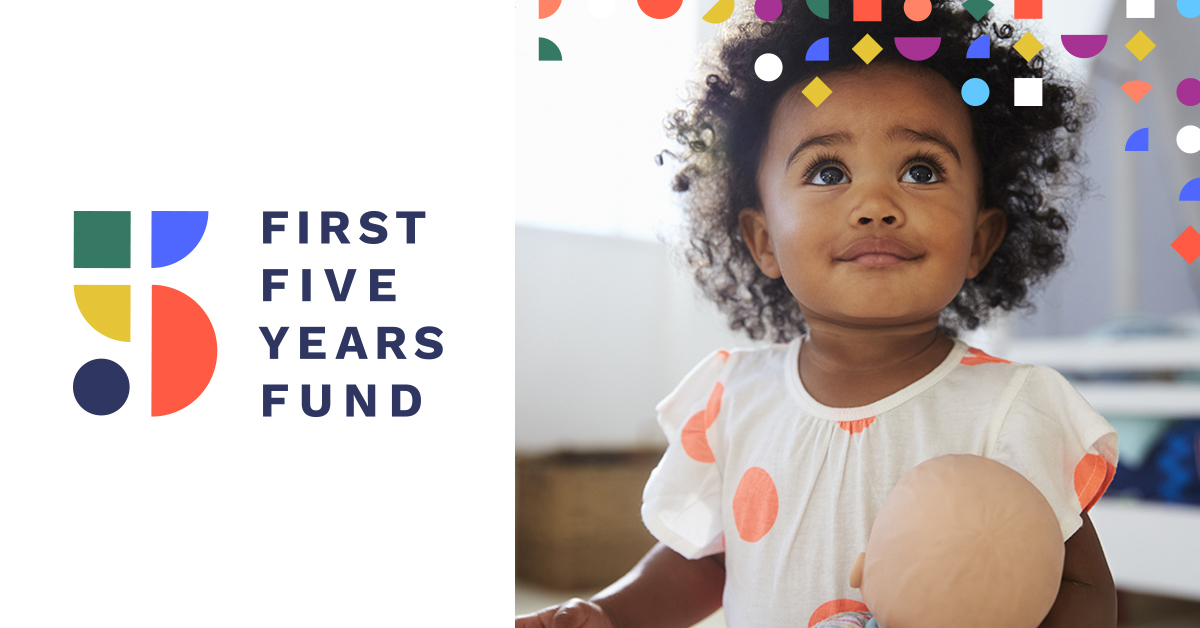How States Are Using PDG B-5 Building Grants to Ensure Child Care Access For All Children
How States Are Using PDG B-5 Building Grants to Ensure Child ... First Five Years Fund


The Strategies States are Using to Ensure Child Care Access for All Children
The BUILD Initiative, ZERO TO THREE, and Start Early, recently released a new brief highlighting the strategies states are using to ensure child care access for all children in their Preschool Development Grant Birth through Five (PDG B-5) Renewal applications. This brief highlights how PDG B-5 is being used to build the capacity of early care and education (ECE) systems, create infrastructure, provide direct services, and pilot new work in order to increase access for children with disabilities and improve the capacity of the workforce to serve all children successfully. However, states are largely employing a patchwork of pilot programs and temporary strategies, and increased federal investments are needed to truly move the needle forward in best supporting young children and their families.
PDG B-5: Improving Early Childhood Education Systems
PDG B-5 is a competitive federal grant designed to improve states’ ECE systems. In 2023, 21 states were awarded Planning Grants, and 21 states were awarded Renewal Grants. While the scope of work for planning grantees is to conduct comprehensive needs assessments and draft strategic plans, the renewal grantees focus on implementing their strategic plan. The 21 renewal grantees are using this infusion of federal funding across a wide range of content areas in their ECE systems, and in a variety of ways, such as by serving children in inclusive early learning settings, expanding professional development training, building the supply of child care, and streamlining administrative requirements.
States’ Approach to ECE System Development
In analyzing PDG B-5 Renewal Grant applications, BUILD found that states have been charting their own course when it comes to ECE system development by working on a variety of projects and initiatives at once. They found that states tend to focus on shorter-term projects for their renewal grants, perhaps because states do not see PDG B-5 as a reliable, continuous funding stream and lack confidence that state funding would be available to sustain the work. States may also be focusing on producing near-term results, or the broad framework of the grant may have led to more responsive strategies.
Improving Inclusion in Early Childhood Programs
Over the years there has been consistent data pointing to children with disabilities, as well as children with developmental delays, disabilities, special health needs, and children who have or are experiencing trauma, being excluded from early childhood programs. Many families have difficulty finding and maintaining consistent inclusive early learning experiences for their children. States are using PDG B-5 Renewal funding, along with other sources, to build inclusive child care systems. This includes exploring policies aimed at reducing suspension and expulsions from ECE programs, with a significant focus on improving the capacity of the ECE workforce to support children displaying challenging behaviors. According to BUILD’s analysis, PDG B-5 Renewal plans were most likely to improve inclusion across 3 categories.
- Infant Early Childhood Mental Health (IECMH)
- Professional Learning and Coaching
- Access to Early Childhood Care and Education
Within these three areas, BUILD found that states are adopting 13 strategies, such as expanding infant and early childhood mental health (IECMH) capacity, implementing training and/or coaching, providing financial incentives to providers who serve children with disabilities, and advancing universal screening and referrals, among many others.
Examples of Strategies Implemented by States
Infant Early Childhood Mental Health (IECMH)
- Idaho is building statewide capacity to support IECMH best practices via a partnership with The Idaho Association for Infant and Early Childhood Mental Health (AIM Early) to support foundational IECMH training and hire trainers/coaches to conduct training for educators and families. They will also increase the number of ECE workforce members with AIM endorsement by using PDG Renewal funds to cover both the costs of the endorsement and membership in AIM.
Professional Learning and Coaching
- Vermont is funding “Touchpoints training” for professionals across the early childhood system including child care educators, family child care providers, home visitors, pediatricians and pediatric nurse practitioners, early interventionists, and child welfare workers.
Access to Early Childhood Care and Education
- New Mexico will establish a “Coordinated Intake and Referral system” for home visiting and early intervention. The goal is to improve coordination of services for families, prioritizing their needs and preferences and minimizing duplication of services.
Throughout 2023, BUILD will continue to produce briefs highlighting how states are using PDG B-5 renewal grants, focusing on the following strategies: Workforce Compensation, Systems Building through Governance Processes, Supporting Multilingual Learners, Career Pathways, Mixed Delivery Systems, and Financing.
This is part of a larger blog series, find the rest of our PDG series here.
SDGs, Targets, and Indicators Analysis
1. Which SDGs are addressed or connected to the issues highlighted in the article?
- SDG 4: Quality Education
- SDG 10: Reduced Inequalities
- SDG 16: Peace, Justice, and Strong Institutions
The article discusses the strategies states are using to ensure child care access for all children, particularly those with disabilities and special needs. This aligns with SDG 4, which aims to ensure inclusive and equitable quality education for all. The focus on reducing exclusion and improving access for marginalized groups connects to SDG 10, which aims to reduce inequalities. Additionally, the article mentions efforts to reduce suspension and expulsions from early childhood education programs, which relates to SDG 16’s goal of promoting peaceful and inclusive societies.
2. What specific targets under those SDGs can be identified based on the article’s content?
- Target 4.2: By 2030, ensure that all girls and boys have access to quality early childhood development, care, and pre-primary education.
- Target 10.2: By 2030, empower and promote the social, economic, and political inclusion of all, irrespective of age, sex, disability, race, ethnicity, origin, religion, or economic or other status.
- Target 16.7: Ensure responsive, inclusive, participatory, and representative decision-making at all levels.
The strategies discussed in the article aim to improve access to quality early childhood development and care, aligning with Target 4.2 under SDG 4. The focus on inclusion and reducing exclusion of children with disabilities and special needs relates to Target 10.2 under SDG 10. The article also highlights the need for responsive strategies and decision-making, which connects to Target 16.7 under SDG 16.
3. Are there any indicators mentioned or implied in the article that can be used to measure progress towards the identified targets?
Yes, the article mentions several indicators that can be used to measure progress towards the identified targets:
- Expanding professional development training
- Building the supply of child care
- Streamlining administrative requirements
- Reducing suspension and expulsions from ECE programs
- Improving the capacity of the ECE workforce to support children displaying challenging behaviors
- Advancing universal screening and referrals
- Increasing the number of ECE workforce members with specific endorsements
- Providing training and coaching focused on trauma-informed practices
- Implementing, expanding, and improving screening and assessment systems
- Establishing a coordinated intake and referral system for home visiting and early intervention
These indicators can be used to track progress in improving access to quality early childhood development and care, promoting inclusion, and ensuring responsive decision-making.
Table: SDGs, Targets, and Indicators
| SDGs | Targets | Indicators |
|---|---|---|
| SDG 4: Quality Education | Target 4.2: By 2030, ensure that all girls and boys have access to quality early childhood development, care, and pre-primary education. |
|
| SDG 10: Reduced Inequalities | Target 10.2: By 2030, empower and promote the social, economic, and political inclusion of all, irrespective of age, sex, disability, race, ethnicity, origin, religion, or economic or other status. |
|
| SDG 16: Peace, Justice, and Strong Institutions | Target 16.7: Ensure responsive, inclusive, participatory, and representative decision-making at all levels. |
|
Behold! This splendid article springs forth from the wellspring of knowledge, shaped by a wondrous proprietary AI technology that delved into a vast ocean of data, illuminating the path towards the Sustainable Development Goals. Remember that all rights are reserved by SDG Investors LLC, empowering us to champion progress together.
Source: ffyf.org

Join us, as fellow seekers of change, on a transformative journey at https://sdgtalks.ai/welcome, where you can become a member and actively contribute to shaping a brighter future.







